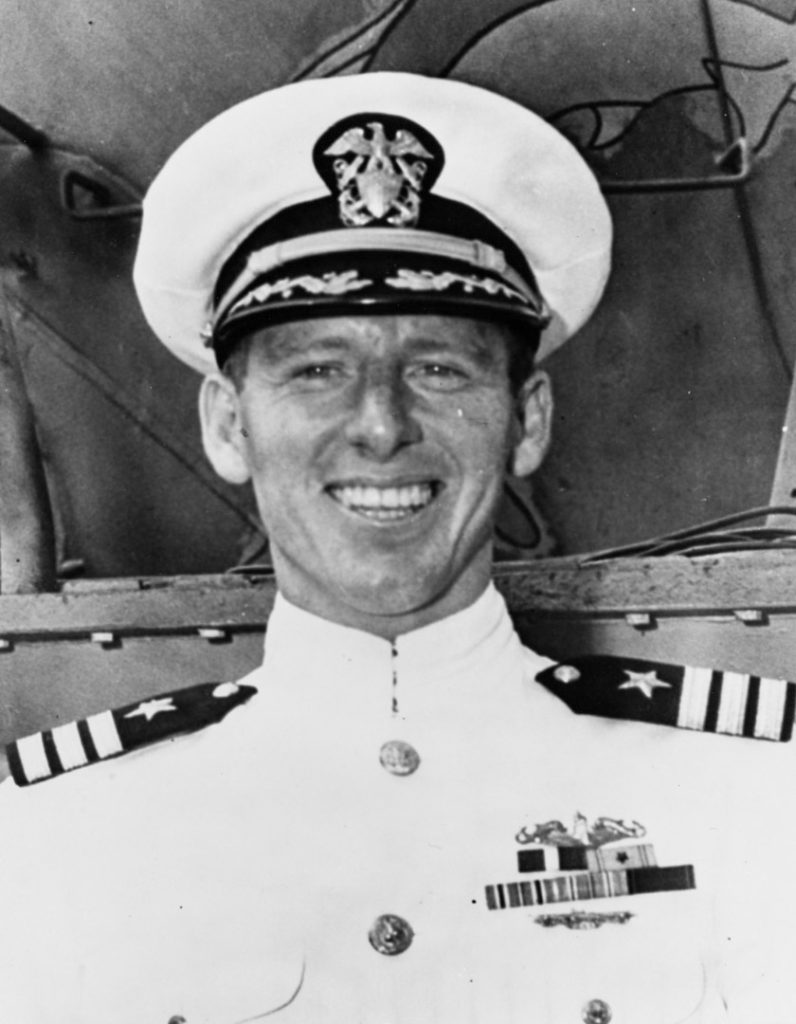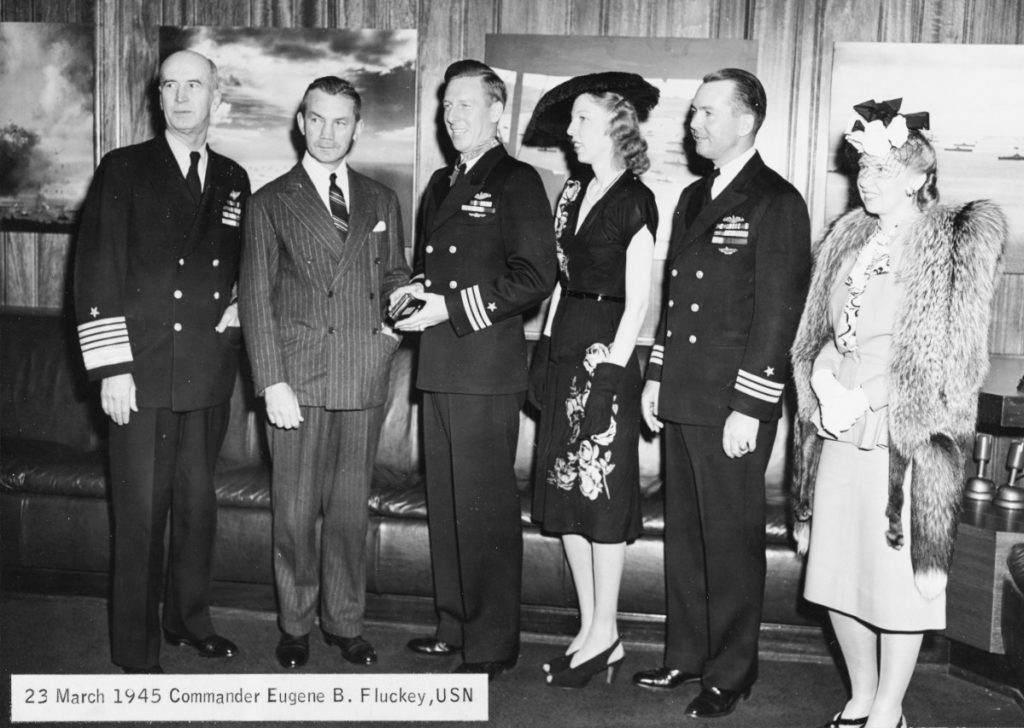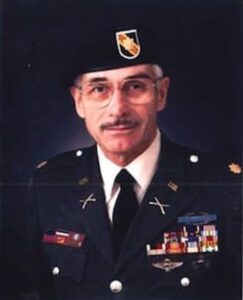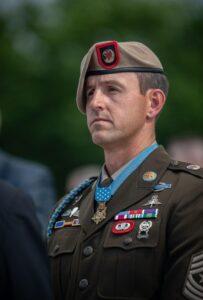
After completing a patrol aboard the USS Barb (SS-220) as its executive officer, Eugene Fluckey took command of the submarine in April of 1944.
Considered to be one of the most aggressive and innovative officers in the submarine force, CDR. Fluckey was a strong believer in using his submarine’s speed advantage while surfaced. His frequently uttered motto was, “we don’t have problems, just solutions.”
While Fluckey and the Barb would have many successful and memorable patrols, it was the sub’s 11th patrol that would bring it lasting fame. Slipping away from Midway Island on December 19, 1944, Barb would patrol with two other submarines off the Chinese coast. On January 1, 1945, Fluckey attacked and sank the Shinyo Maru and Sanyo Maru in the Formosa Strait. Resurfacing after this first attack, Barb found a new target and sent three torpedoes into the side of a large passenger ship which set off a spectacular explosion. As reported by Fluckey, the Anyo Maru’s explosion could be felt 4,000 yards away as shrapnel from the doomed ship poured down out of the sky.
With enemy ships now seeking shelter in ports along China’s coast, CDR. Fluckey made the decision to silently penetrate Namkwan Harbor (Yanpu Wan, China). In the murky pre-dawn, the Barb maneuvered into the harbor and around several patrolling warships on January 23, 1945. With barely enough water underneath it to keep it afloat, Fluckey sent a spread of 10 torpedoes into a concentration of 30 Japanese ships. Fluckey believed that he achieved 8 hits and that three ships sank and another three were damaged. As smoke and fire billowed out of its targets, Fluckey used his sub’s radar to navigate by the dangerous shoals and around Chinese junks as he sought to make his exit. With a Japanese destroyer lobbing shells at the speeding sub, “Lucky” Flucky reached the 20-fathom line and submerged. “The Galloping Ghost of the China Coast” had escaped after delivering one of the most daring submarine attacks of the war. After returning to Pearl Harbor, the men of the USS Barb would earn a Presidential Unit Citation and CDR. Fluckey would receive the Medal of Honor.

Fluckey would make one more patrol aboard the Barb, one in which he employed rocket launchers that had been affixed to the deck of the submarine against the Japanese-held towns along the Sea of Okhotsk. On the evening of July 22-23, 1945, men from the USS Barb rowed ashore in Japan and planted explosives along a train track that subsequently destroyed a Japanese train. This is why, along with all of the Barb’s more conventional victories and its Medal of Honor ribbon, that you will find a train on its battle flag.

In addition to his Medal of Honor, CDR. Eugene Fluckey would earn four separate Navy Crosses and the USS Barb would end the war with four Presidential Unit Citations. Fluckey’s war record included 16.3 ships sunk for 95,360 tons* – by some lists the most tonnage of any U.S. submarine captain in history.
Eugene Fluckey was born in Washington DC and graduated from the United States Naval Academy in 1935. He retired as a Rear Admiral in 1972 and passed away in Annapolis, Maryland in 2007. He is buried at the United States Naval Academy Cemetery in Annapolis.
* Fluckey was originally credited with sinking 25 ships for a total of 179,700 tons.
Learn More
- USS Barb (US Navy History and Heritage Command)
- Adm. Eugene Fluckey Dove Deep and Unconventionally to Wage War (IBD)



